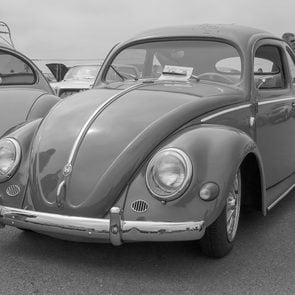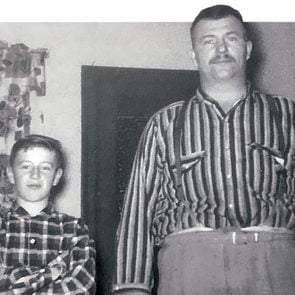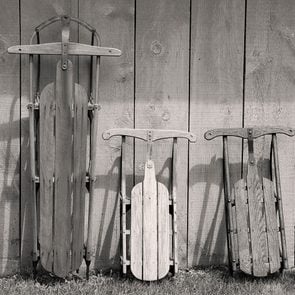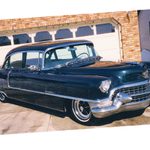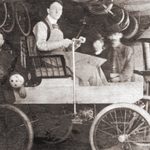If You Built a Soapbox Racer as a Kid, This Sweet Story Will Take You Back
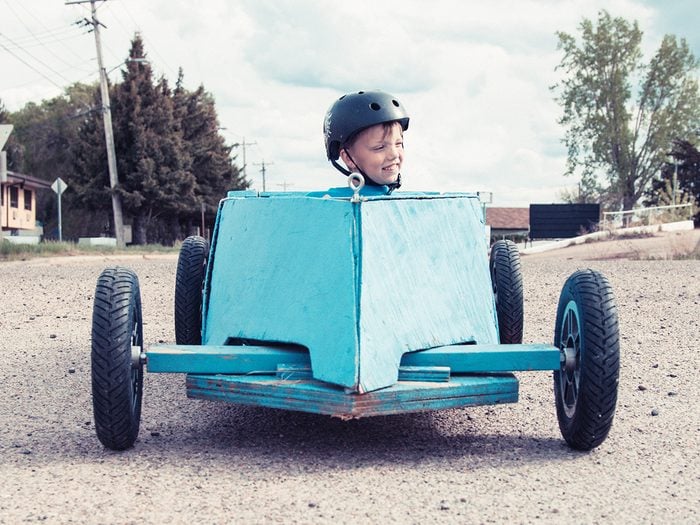
Remembering hometown thrills and spills, plus quality time with Dad in the summer of '55.
One of the last things I remember doing with my dad, before he got so sick, was building a soapbox racer in our hometown of Moose Jaw, Saskatchewan, in the summer of 1955. Back then, racers were built out of spare parts. Scrap lumber, old pieces of rope, rusty nails and axles and wheels. Ah yes, wheels. The Holy Grail of racer construction. During soapbox construction season, there was not a baby-carriage wheel, toy-wagon wheel or any other garden piece or home-use wheel that was safe. Many were the back porches that held baby carriages with only the two front wheels or an American Flyer red wagon without any wheels at all. Wheels were everything and the solid red ones with the rubber tires were the most valued.
Racers were built for speed and speed alone. No extraneous frills or doodads were allowed. The object was to be the fastest in the land. Steering mechanisms consisted of lengths of rope fastened to the moveable board at the front that held the axle and guide wheels or very often, nothing at all—the steering was accomplished by simply pushing on the board with your feet. Some even had steering wheels attached by some unexplainable method, but we didn’t associate with those kinds of people. Brakes were, at best, an afterthought and usually consisted of a stick that made contact with the ground. Sometimes, it was attached to the body but often was simply laid in the driver’s lap.
Races would be held on Saturday in order, it seemed, to cause as much chaos in city traffic patterns as possible. Every year, the chamber of commerce would protest to the city council and every year the councillors would ignore their request.
People would begin lining up along the race route hours before the start. They would bring lawn chairs and boxes of sandwiches, fruit and thermoses of coffee. The race route itself was only five or six blocks long, so prime viewing space was at a premium.
Racers would be lined up eight or ten across the top of the biggest hill in town, with a pusher behind each one. Upon the signal, the pusher would do just that to his appointed racer with each of them trying to out-do the next for starting speed. The racers would begin careening down the hill. The more poorly engineered and constructed ones would begin to fly apart almost instantly, with wheels, pieces of wood, axles and every other part flying around the track and drivers rolling invariably into the crowd who, while risking dire injury, seemed to enjoy the whole experience. Farther down the track, the collisions would begin as the frail steering systems failed. More flying parts. More rolling drivers. More pandemonium. It was great fun to watch!
After a great many heats, a final winner would appear. It was akin to being the winner of a demolition derby, in that the winner was not necessarily the fastest but simply the survivor.
Looking back on these events today, I don’t remember actually taking much of a part in the construction of the racer. That was probably more the work of my older brother. I also don’t remember driving the actual racer—that was probably my brother, too. In fact, the only thing I do remember vividly about soapbox racing in Moose Jaw was spending time with my dad.
Next, find out what it was like learning to drive on the farm in the ’60s.
